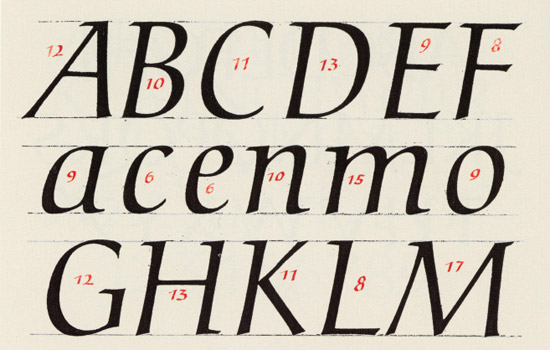 The New York Times reports that former Rochester Institute of Technology (RIT) professor and world-renowned typographer Hermann Zapf passed away in his home in Darmstadt, Germany. He was 96.
The New York Times reports that former Rochester Institute of Technology (RIT) professor and world-renowned typographer Hermann Zapf passed away in his home in Darmstadt, Germany. He was 96.
Since 1948, Zapf created some of the most recognizable typefaces in the world. They are featured in paper, signposts, monuments, and computer screens in several different alphabets. In the typography industry, Zapf was considered one of the preeminent designers of his time, having created over 200 typefaces in such alphabets as Latin, Cyrillic, Arabic, and Cherokee. As one of his students put it, his mission in life was “to create beautiful letters.”
“Last Thursday, all the rest of us moved up one,” said Matthew Carter, another prominent typographer whose designs include Verdana and Georgia. “That’s my way of saying Hermann was on top.”
Among Zapf’s most famous work include Palatino, a classical Roman design with modern features. It is currently available on Microsoft Word, Linotype, and is also used by several businesses as its official type, including Abercrombie & Fitch.
Another font, Optima, is a mixture of thick and thin strokes reminiscent of a traditional typeface and a sans serif design. Optima can be found in such features as the Vietnam Veterans Memorial in Washington D.C. and Estee Lauder cosmetics packaging. It was also used as the semi-official typeface of John McCain’s 2008 presidential campaign.
Other fonts of Zapf’s include Melior, Hunt Roman, Zapfino, and Zapf Dingbats (a collection of symbols included in the Apple laser printer in the 1980s).
Born in Nuremberg, Germany on November 8th, 1918, three days before World War I ended, Zapf grew up in a working class family in the midsts of the Weimar Republic and eventually the Third Reich. His father, an autoworker and union organizer, opposed the Nazis and was briefly sent to prison in the 1930s.
Zapf fought in the German army during World War II, particularly in the Western Front, serving as a mapmaker. After the war, he pursued his typography career, developing what is arguably his most famous typeface, Palatino, in 1948. Since the 1950s, he taught typography and design at RIT, Stanford, and elsewhere. He also worked for such companies as Hallmark.
Zapf’s typefaces have been used extensively in the digital revolution. Typography is a critical component of any web design project, including the creation of business websites and blogs. Companies that blog (and use attractive typefaces) have on average 434% more indexed pages than companies that don’t.
[Image courtesy of RIT News.]






No Comment